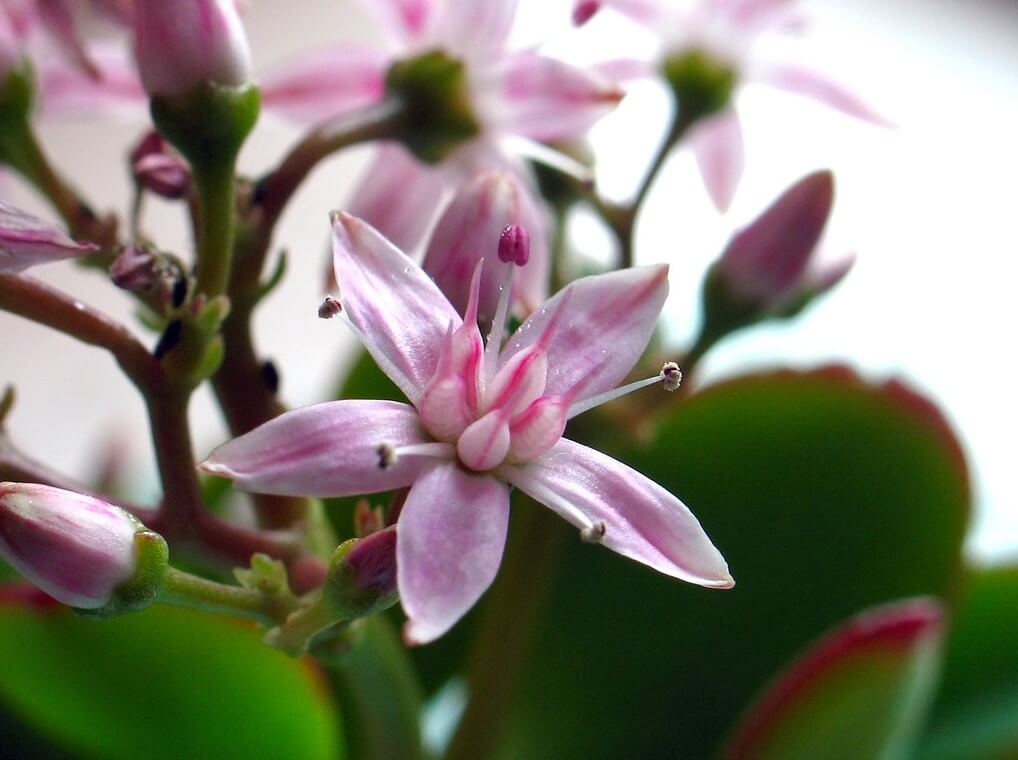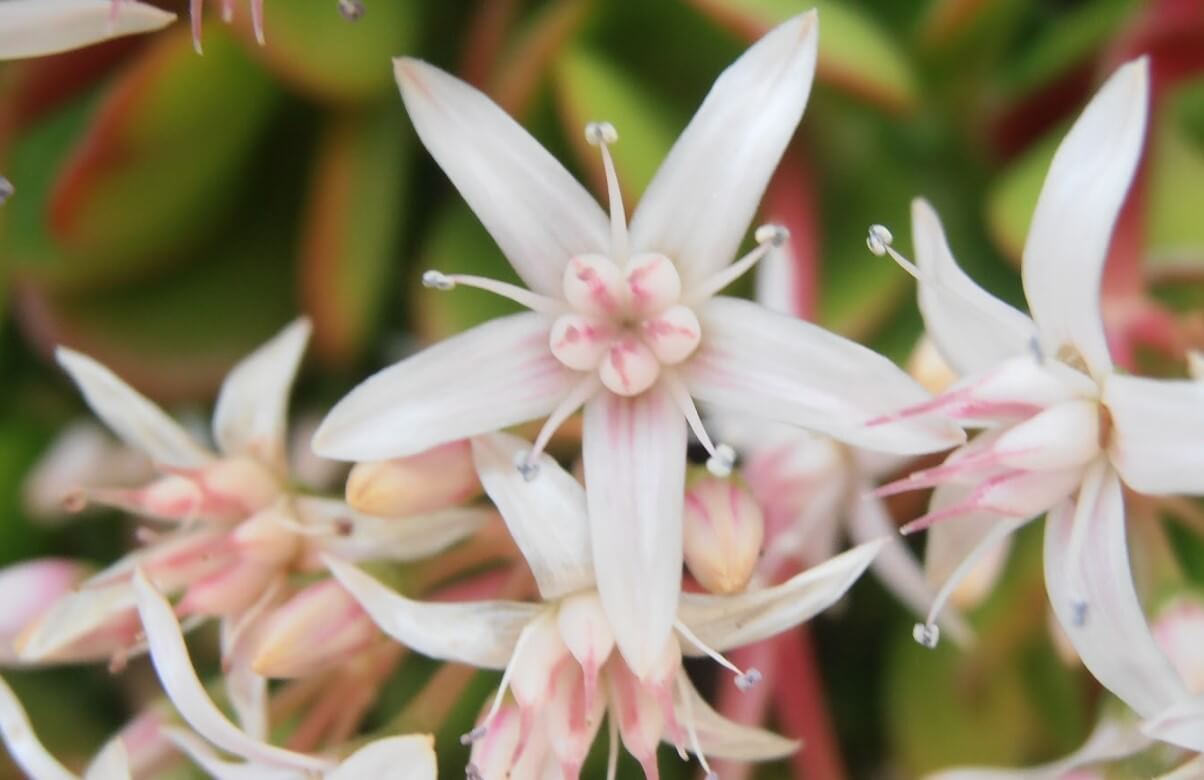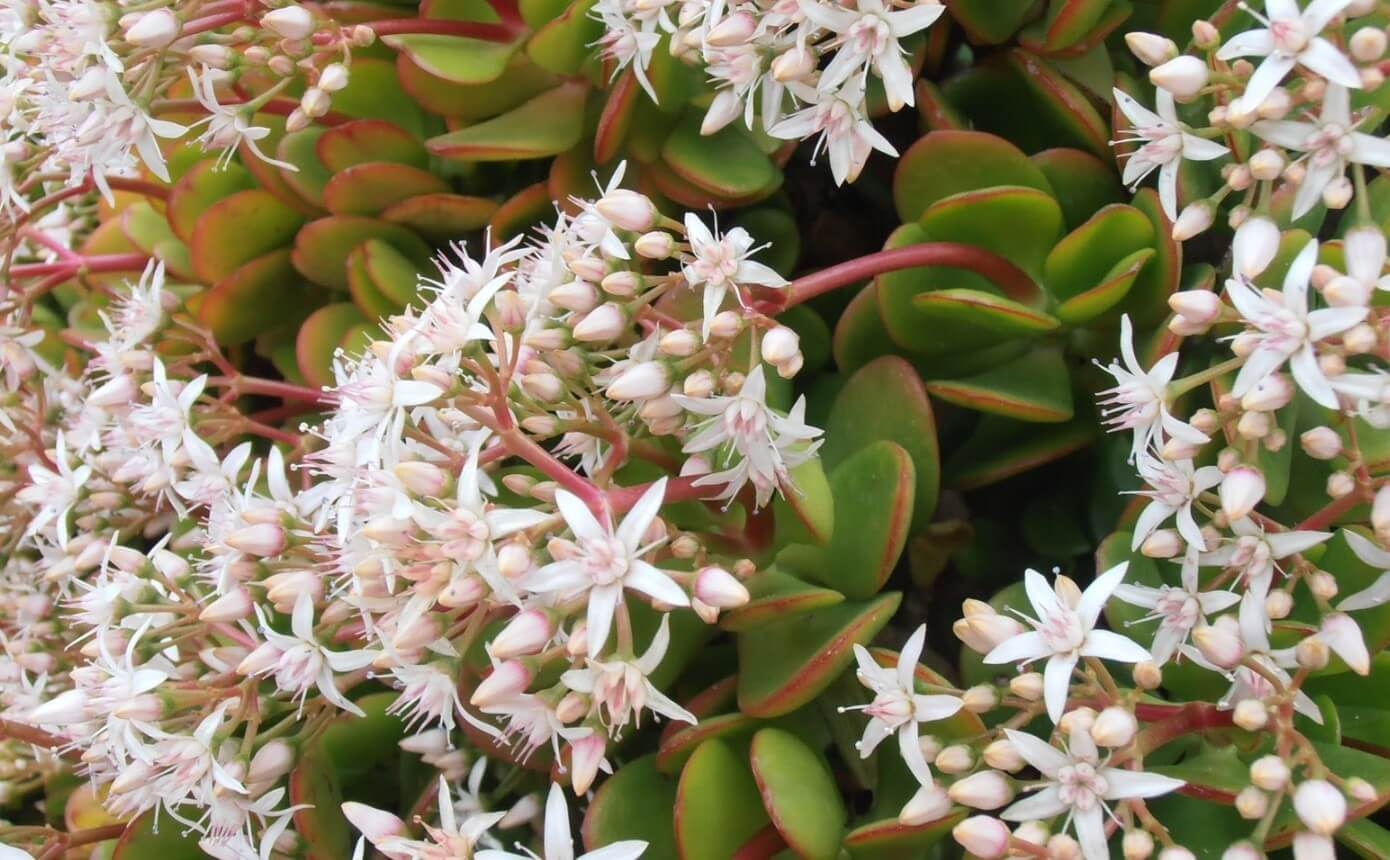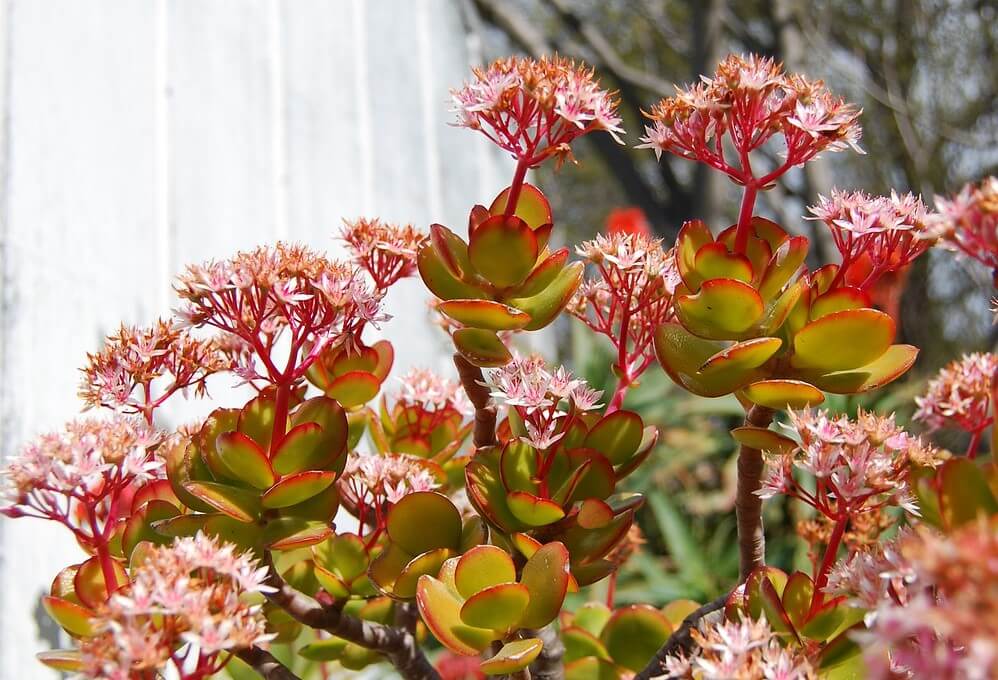Crassula Ovata The jade plant has smooth green leaves and a clean shape. It brings tranquility. Many kill it. But care is simple.
Water when soil is dry. Let water drain well. Full sun is best. Partial sun also works. Use cactus soil mix. Fertilize monthly during growing season.
Propagate new plants from leaves or stem cuttings. Place cutting in well-draining soil. Keep soil slightly moist. New roots will grow.
If leaves fall, plant gets leggy or brown, it needs more sun and less water. Jade plants are hardy if cared for properly. They purify the air and soothe the soul. Mini jades in small pots also do well. Larger jade trees require occasional pruning for shaping.
With basic care the jade plant will thrive for years. It is the ideal low maintenance houseplant for beginners and experts alike. Pay attention to its needs, and your jade plant will bring tranquility inside.
This guide has easy tips to help your jade plant thrive and bring nature inside. Let your journey to Jade Plant Zen begin!
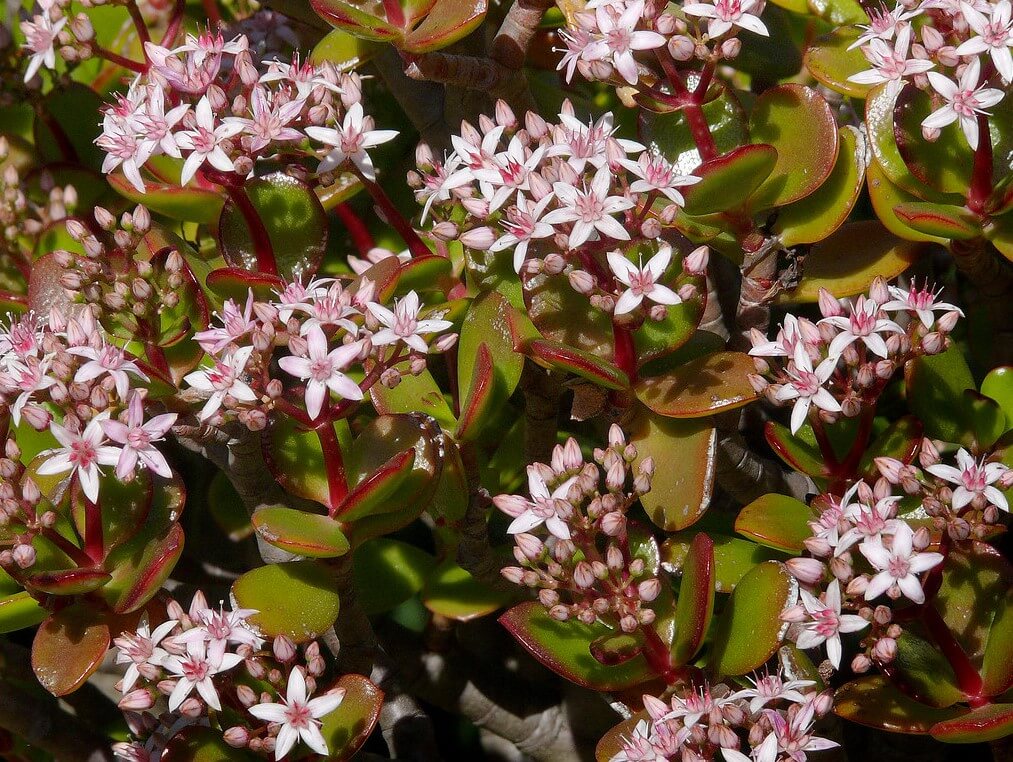
Choosing the Right Potting Soil
The jade plant thrives in fast-draining cactus and succulent soil. Avoid moisture-retentive potting mixes. Make your own soil with sand, perlite, and gravel for optimal drainage.
Well-draining soil prevents root rot. Let excess water flow out the pot’s drainage holes. Soggy soil kills Jade plants.
The other succulent type is Aeonium Arboreum, you can learn Aeonium Arboreum Plant Grow and Care Tips by read this post.
Well-Draining Cactus/Succulent Mix
Use a commercial cactus and succulent potting mix for Jade plants. Or make your own fast-draining soil.
Mix together equal parts potting soil, coarse sand, perlite, and gravel. Jade plants need soil that dries out quickly.
Avoid Moisture-Retentive Soil
Regular potting soil or garden soil holds too much water for Jade plants. Their roots rot in dense, soggy soil.
Use a gritty, porous mix that drains fast. Add perlite, gravel, or sand to improve drainage in bagged potting mixes.
Make Own Mix
To control moisture, make your own Jade plant soil. Combine equal parts sand, perlite, and gravel with some potting soil.
This fast-draining homemade mix prevents wet roots. Test drainage by watering soil and letting excess flow out pot bottom.
This is the section about how much light is needed. It is written in a simple style with important words and short sentences.
Light Requirements
The Jade plant needs lots of bright light. At least 4 hours of direct sun daily A south- or west-facing window works best.
Without enough light, the Jade gets leggy and weak. Supplement sun with grow lights if needed.
Bright Light, 4+ Hours of direct sun
Bright light is crucial for the Jade plant. It needs a minimum of 4 hours of direct sunlight daily.
An unobstructed south- or west-facing window provides the best light. East can work too.
South or West Facing Window
Place your Jade plant in a south or west facing window. These provide the most intense direct sun.
Sheer curtains can filter harsh afternoon sun from the west. Avoid a north window.
Supplement with Grow Lights
If a sunny window isn’t possible, use grow lights to supplement. LED grow lights work well.
Place lights 6-12 inches above the Jade plant. Time lights to 14 hours on daily.
Fertilizer Needs
The Jade plant needs fertilizer during the growing season for healthy growth. Use a diluted balanced houseplant fertilizer. Feed not at all in winter.
Balanced Fertilizer in Growing Season
Apply a balanced liquid fertilizer to Jade plants in spring through summer. Look for a formula labeled for indoor plants or succulents.
Dilute to half strength. Feed every 2-4 weeks while the plant is actively growing. More frequent feeding risks buildup and burn.
Dilute to Avoid Burn
Always dilute fertilizer for Jade plants. Start with half the recommended dosage. You can increase to full strength over time if no damage occurs.
Excess salts from overfertilizing burns Jade plant roots and leaves. Flushing the soil monthly prevents fertilizer buildup.
None in Winter
Stop fertilizing Jade plants in fall and winter when growth slows. Resume feeding when new growth appears in spring.
Fertilizer encourages growth. Since the Jade plant is semi-dormant in winter, fertilizer is not needed or helpful during this time.
Repotting and Pruning
The Jade plant needs repotting every 2-3 years. Prune for shape and growth. Propagate pruned stems.
Repot Every 2-3 Years
Repot Jade plants in fresh soil every 2-3 years in early spring. This prevents roots from getting bound.
Choose a pot one size larger. Gently loosen old roots and replant at the same level. Water well after repotting.
Prune for Shape and Growth
Prune Jade plants in spring to control shape and size. Cut back leggy growth to force bushiness.
Make cuts just above leaf nodes. Sterilize pruners between cuts. Remove dead leaves and stems too.
Propagate Pruned Stems
Take pruned Jade stems 2-3 inches long. Allow to dry and callous for a few days.
Dip in rooting hormone then plant in well-draining soil. New roots and growth will emerge in a few weeks.
Propagation
The Jade plant is easy to propagate from stem or leaf cuttings. Use of rooting hormone speeds root growth. Plant cuttings in proper soil.
Stem and Leaf Cuttings
Take 3-4 inch sections of stem in spring. Allow to callous for a few days. Dip in rooting powder then plant in soil.
Leaf cuttings work too. Cut a leaf and let callous. Plant the stem end in soil. New plants will emerge. Keep soil slightly moist.
Rooting Hormone Speeds Growth
Using a rooting hormone helps Jade cuttings root faster. Dip the cut end in the powder before planting in soil.
Without hormone, stem and leaf cuttings may take longer to root. But new plants will still eventually form.
Plant in Well-Draining Soil
Once calloused and dipped in rooting powder, plant Jade cuttings in a well-draining potting mix.
Use cactus soil or add perlite and gravel to regular potting mix. This prevents rot while new roots establish.
Troubleshooting Common Problems
Understanding the most frequent Jade plant problems allows quick diagnosis and remedies. Look for key symptoms and address the underlying causes.
Leaf Drop – Overwatering
If leaves fall off with little handling, overwatering is likely the culprit. Soil stays too wet and roots rot.
Allow the potting mix to dry out further between waterings. Repot in fresh, dry soil if needed. Reduce watering frequency.
Leggy Growth – Needs More Sun
If the Jade plant becomes tall and leggy with sparse leaves, it needs more light. An insufficient sun location causes weak growth.
Move the plant to a south or west window for direct sun. Or supplement with grow lights to increase light levels.
Brown Leaf Tips – Inconsistent Water
Brown, crispy leaf tips often signal inconsistent watering. Allowing the soil to completely dry out then soaking causes stress.
Water thoroughly when the top inch of soil is dry. Then allow to dry again before the next watering.
Toxicity Concerns
The Jade plant contains irritating chemicals that can sicken people and pets if ingested. Keep it away from kids and animals.
Toxic to Pets if Eaten
All parts of the Jade plant are poisonous to dogs and cats if eaten. The leaves and stems contain chemicals called oxalates.
Ingesting these crystals causes immediate mouth pain, drooling, vomiting, and trouble swallowing. Seek veterinary help if poisoning is suspected.
Irritation, Nausea in Humans
For humans, swallowing or chewing Jade plant parts leads to a burning sensation and irritation in the mouth and throat. It may also cause nausea, vomiting, and difficulty swallowing.
Keep plants out of reach of young kids who could put leaves in their mouths. The toxins can be very dangerous if large amounts are consumed.
Keep Away from Children and Pets
To prevent accidental poisoning, place Jade plants somewhere inaccessible to pets and children. Keep away from areas where kids play.
Cats and dogs may be attracted to the Jade plant and chew on its leaves. Supervise pets around the plant and move it if needed. Better safe than sorry.
Conclusion
Caring for the undemanding yet striking Jade plant is easier than you think. To keep this succulent healthy for many years, give it lots of light, well-draining soil, occasional food, and water it properly. Repot every 2-3 years, prune to shape it, and propagate stems for new plants.
If issues appear, inspect closely and tweak care. With its smooth jade leaves and graceful shape, the Jade plant purifies your space with tranquility. Follow this guide to give your Jade plant the simple care it craves. Soon you’ll have a flourishing, healthy specimen gracing your home.
Remember, any plant can occasionally show signs of stress. Don’t become discouraged if your Jade plant drops a leaf or gets leggy. Identify the cause and make adjustments. With a little time and attention, you can get your Jade plant back on track. Growing these undemanding succulents is very rewarding when you give them what they need to thrive.

